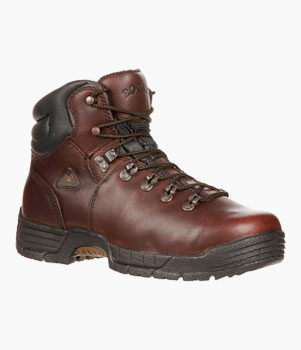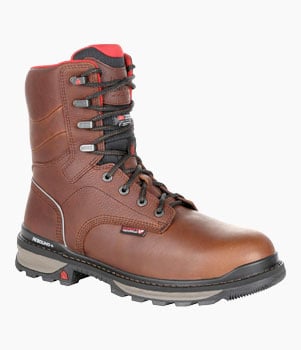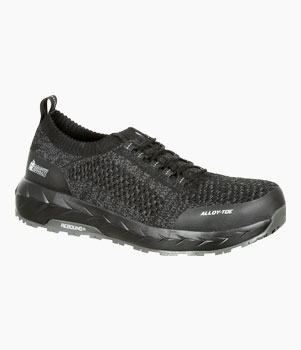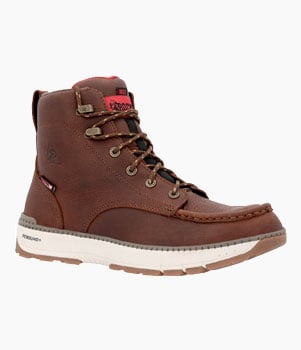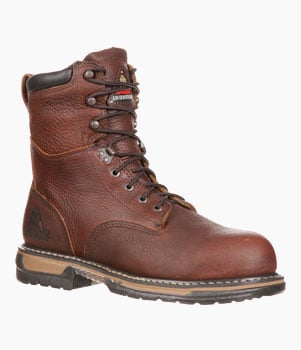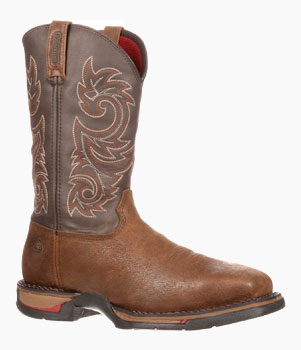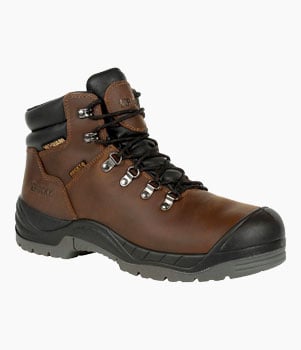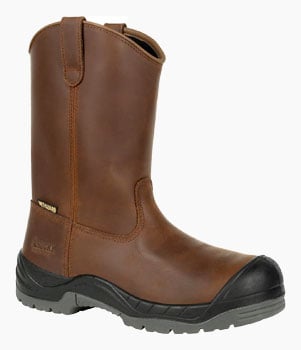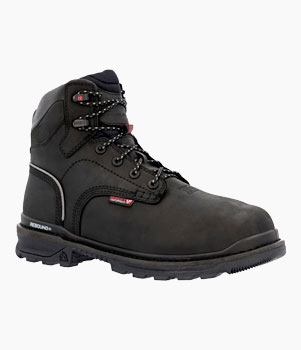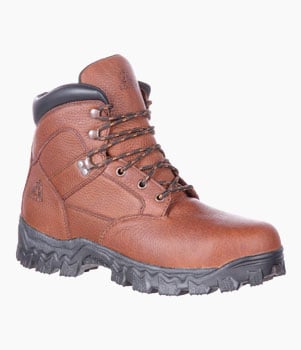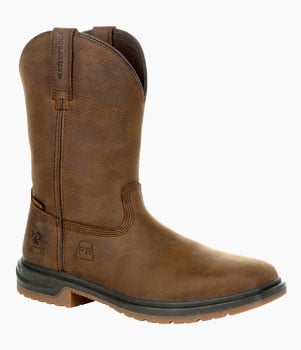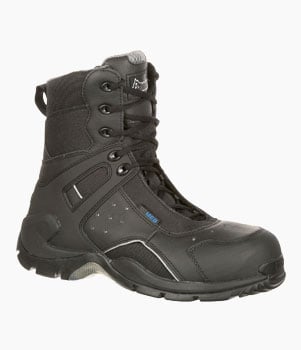FREE SHIPPING & RETURNS ON CONTIGUOUS U.S. $75+ ORDERS

Written by Rocky Staff | Footwear
Tough jobs call for tough people, and tough people need tough boots. Whether you're fabricating metal parts, working construction, or operating heavy machinery – proper footwear is imperative to keeping you safe on the job.
ASTM International sets safety standards for various products, services and industries. By gathering input from more than 30,000 technical experts, academics, users and manufacturers worldwide, ASTM certifications for footwear ensure that specific styles and designs are appropriate for workplaces with unique risks or dangers.

Chances are, you've seen data sheets or contracts requiring ASTM compliance on a jobsite. The notation for these footwear protections is ASTM F2413, which will often be listed with other footwear safety specifications or requirements.
We've compiled some information to help you make sense of the most commonly required ASTM certifications as well as find your next pair of safe, reliable, and comfortable work boots.
Protective Toe
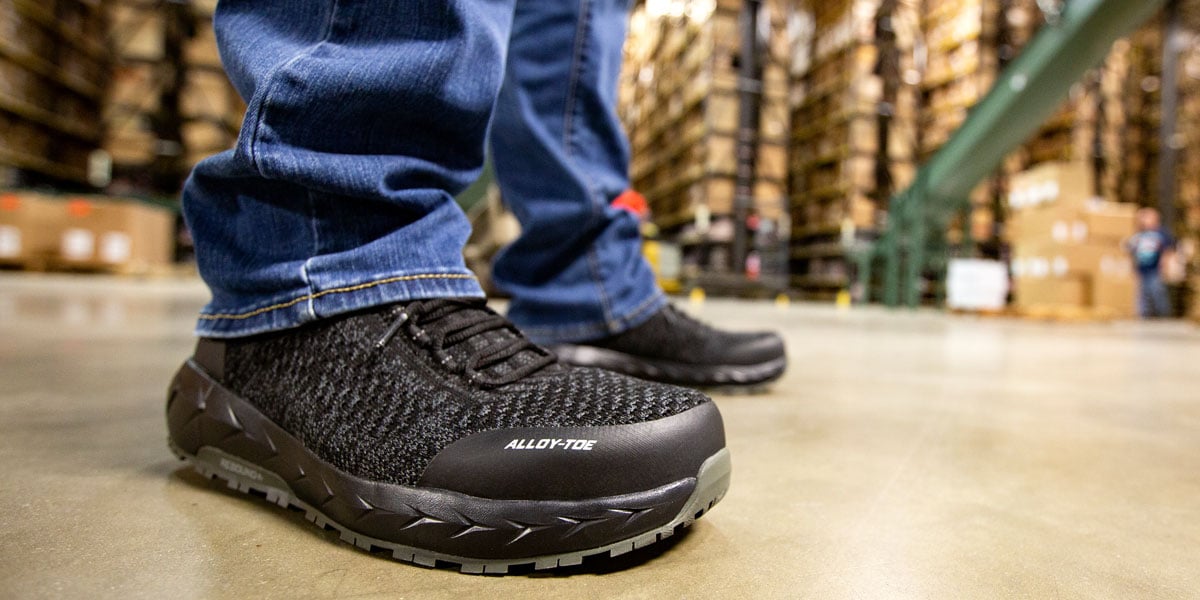
Why are protective toe boots required on some job sites?
For industries like construction or manufacturing, objects falling on a worker's foot is a constant concern. Any jobsite with the lifting or movement of heavy items is likely to require protective toe footwear.
What is the ASTM F2413 Standard?
Boots that meet the ASTM protective toe standard retain a half-inch clearance for men and 15/32 inch for women when impacted with 75 foot-pounds on impact, or after compression at 2,500 pounds of pressure.
How are boots designed to meet this standard?
Protective toe boots come in a variety of types, the most common being steel and composite toe. These boots are constructed with a toe cap inserted into the toe of the boot. Both are used for industries where there is a significant risk of falling objects, though composite toes are made from a lighter weight material. Other types of safety toes include alloy and carbon fiber.
We introduced the industry's first ASTM certified externally attached protective toe in our groundbreaking collection, Rocky XO Toe.
Electrical Hazard
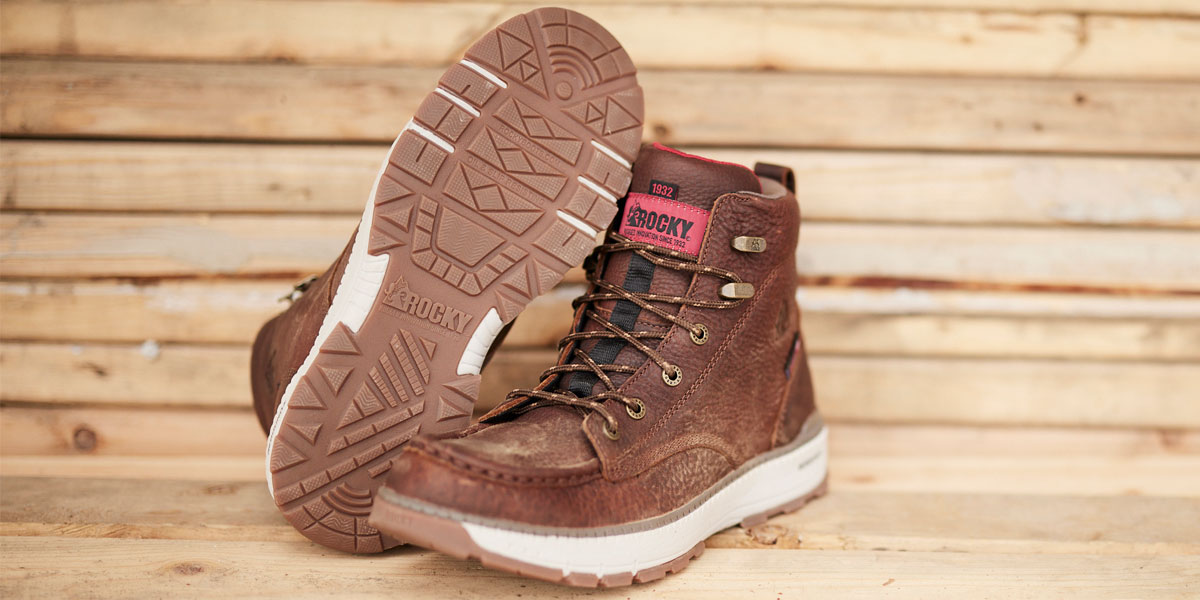
Why is electrical hazard protection required on some job sites?
Working with electricity can be dangerous and jobsites spanning almost every industry have standards in place to protect employees from being exposed to electric shock.
What is the ASTM standard for electrical hazard protection?
The ASTM standard for electrical hazard protection is that the boots must be capable of withstanding 18,000 volts at 60 hertz for one minute with no current flow to the foot.
How are boots designed to meet this standard?
Boots that meet the ASTM standard for electrical hazard often contain no metal or other materials that conduct electricity. The shanks, outsoles, and heels are specifically made with materials that do not conduct electricity.
Metatarsal Protection
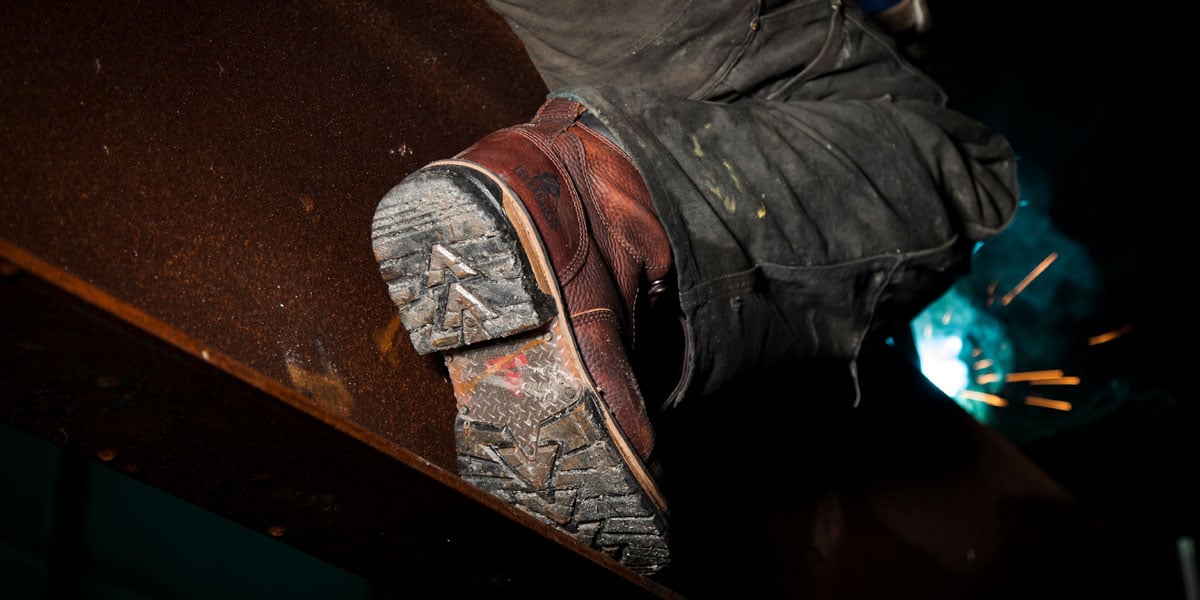
Why is metatarsal protection required on some job sites?
Similar to the protective toe, the metatarsal guard protects the top of the foot from impact and compression.
What is the ASTM standard for metatarsal protection?
The ASTM standard for metatarsal protection is also similar to that of protective toes - boots must maintain one inch of clearance to the top of the foot when impacted with 75 foot-pounds on impact.
How are boots designed to meet this standard?
Work boots with metatarsal protection are designed in a variety of ways. Some boots offer an internal protective plate over the top of the foot, while others feature an external protective element on the outside of the boot.
Puncture Resistance
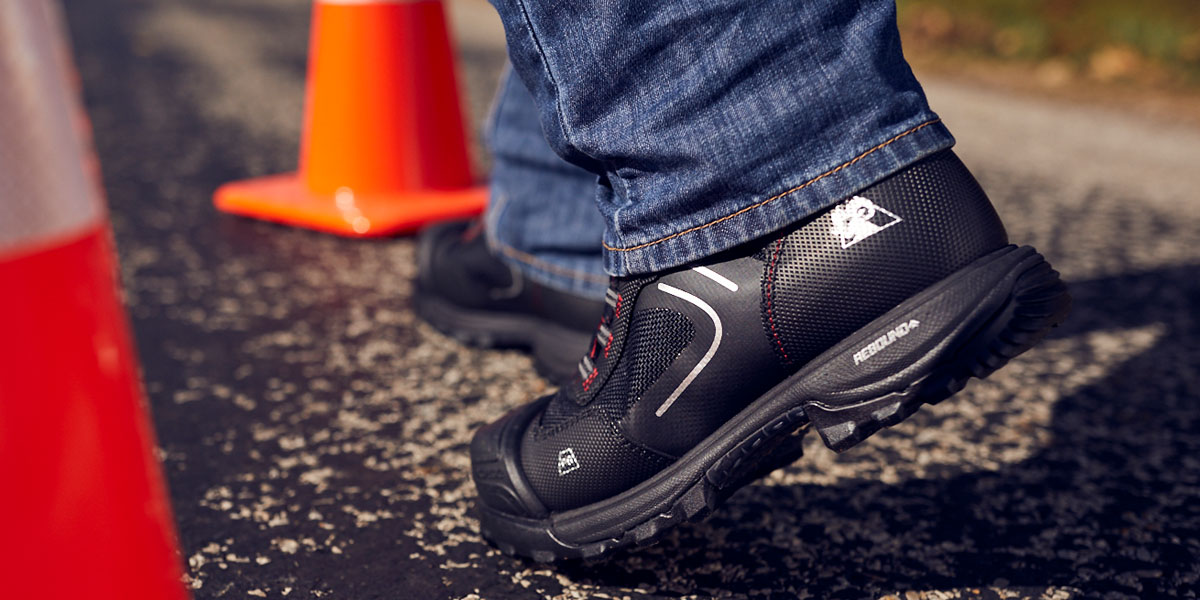
Why is puncture resistance required on some job sites?
Puncture resistant footwear reduces the possibility of sharp objects penetrating through the bottom of the shoe. Jobsites with nails or scrap metal often require puncture-resistant footwear.
What is the ASTM standard for puncture resistance?
ASTM certified puncture-resistant footwear must withstand 270 pounds of force through the sole and heel area.
How are boots designed to meet this standard?
Puncture-resistant plates are permanently built into the footwear between the outsole and insole. They are often made from steel or another sturdy material.
Protective toe, electrical hazard, metatarsal protection and puncture resistance are the most common certifications for work footwear. Rocky builds footwear to keep you safe while offering performance features like waterproofing, breathability, insulation, and the industry's most comfortable footbeds.
For a deeper dive into what boots are best for you, our retailers nationwide stand ready to help. Visit our Dealer Locator to find a dealer near you.



